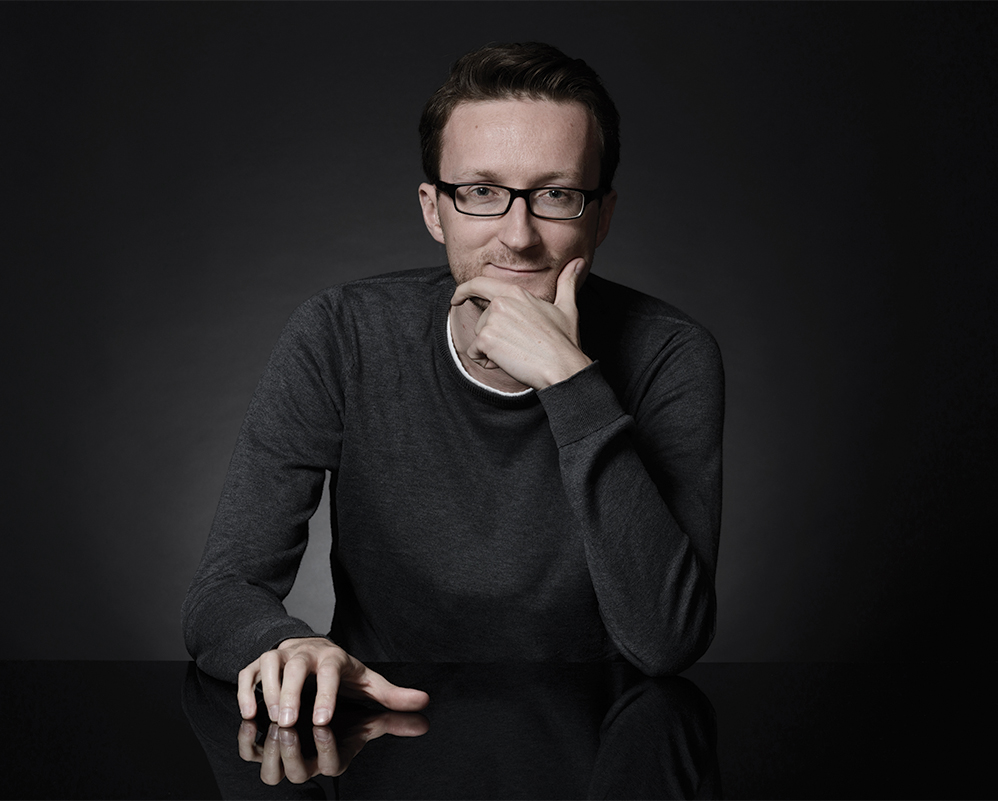Tomasz Lis | London | October 2018
Johnann Sebastian Bach composed his funeral cantata Actus tragicus BWV106 at the age of twenty-two in Mülhausen. The contract, prepared upon his request in writing, bore no signature and was sealed with a handshake. Perhaps, the town clerks could find neither pen nor quill! Gottes Zeit ist die allerbeste Zeit is a work of remarkable maturity and composure for a man of such a young age. Its forces are modest and contain a palette of soft hues. And yet with only two recorders, a pair of violas da gamba and an organ, Bach creates an extraordinarily beautiful tapestry of sound with miraculously varied textures.
One marvels at the opening Sinfonia, with its heart beating pace and poignant simplicity, where a supposedly obvious harmonic pattern creates a heaven of peace and contemplation. As often with Bach, one feels that music has no end and could continue for ever, as if the doors to eternal life were just opening. “A thousand years are a single day, a yesterday now over, an hour of the night” says Psalm 90 and time is silent. Like in many great works of art, silence is immanently linked with sound and Bach was a master of silence. He must have known that profound mysteries may address us only in silence, as the monastic rules of silence in the West encouraged for centuries. Perhaps the most striking use of silence comes when the soprano sings ‘Yes, come, Lord Jesus’ and after several pleas, all the instruments drop one by one, leaving the singer to perform alone an extraordinary arabesque, followed by a bar of silence. Bach’s ingenious instrumentation allows the listener to enjoy many such moments. When the bass sings ‘Put your house in order; for you will die’, he is partnered by the exquisite acrobatics of the recorder. In mythology, the flute was associated with gods and spirits, as if, in the flute’s evocative, spectral sounds, God wanted the listener to experience infinite and finite, sound and silence: the notes and the space between them. In the F minor Harpsichord Concerto BWV1056, Bach creates an even more otherworldly experience. The solo part of utmost simplicity is accompanied by the soft pizzicato of the strings and the silence that separates those parts is of another world. It almost feels extraterrestrial, as if we were circling the earth’s orbit watching the planets, defying gravity. Perhaps modern piano is more suited to that kind of effect than the slightly ‘noisier’ harpsichord.
Our times are not sympathetic to silence. Every day we experience a barrage of noise. It’s almost as if people were afraid of silence so they always listen to something. The world was not always as noisy as nowadays, though some places associated with calm and peace were often far from that. A short visit to an eighteenth-century church or an opera house could be quite an unusual experience for a modern man. And yet, both in music and art, humans craved for harmony and peace since time immemorial. In music, silence is palpable and almost physical. It can be tense, relaxing, frightening or mystical but how do we paint something invisible to human eyes? Jan Vermeer, born in Delft in 1632, was a master of silence. His life fell right in the middle of the Baroque era: time of an almost cinematic movement in art, splendour and extravagance, exuberant gestures and grandiose subjects. And yet, in his art everything is simple and discreet. Most of his paintings are filled with young women aged between fifteen and thirty-five, in other words, always of child bearing age. His wife bore him fifteen children of whom four died young.
Most of his oeuvre shows interiors with solitary figures, few scarcely populated outdoor scenes, and then, there is the famous view of Delft which must rank as one of the most famous and beautiful landscapes ever painted. There is an occasional conversation, exchange of glances, delivery of a letter, discreet sound of music, but no crowds and hardly any noise coming from the outside world. The silence reigns supreme. Minute gestures, blink of an eye, lowered eyelids, tiny hand movement, all imbue Vermeer paintings with the atmosphere of calm and contemplation. Like with Bach’s flute arabesques in his BWV106 cantata, there is a great sense of space in regard to objects and their positioning. The light plays an equally crucial role, adding an almost psychological depth to the canvas. In ‘The Girl Reading a Letter at an Open Window’ from the Gallery of Old Masters in Dresden, the young Dutch blonde’s face is reflected in an open window as if the painter wanted to give us a glimpse of her mind working out the letter. Do we want to look at the mirror? Can we face the silence? For artists, silence is essential as it nourishes their imagination and allows them to stare into their souls in search of the truth. To experience it fully, one needs to step outside of oneself and clear one’s mind of unnecessary clutter. As Aristotle once said: “The aim of art is to represent not the outward appearance of things, but their inward significance”. There is a poignant moment in Bach’s St. Matthew’s Passion when Peter has denied Jesus three times, after which he goes out and cries bitterly. Bach marks it with a rest and fermata. Suddenly this profound silence becomes an incredibly powerful and almost unbearable metaphor of human failure. There is nothing left but tears and silence.
“A philosopher once asked the Buddha: Without words, without the wordless, will you tell me the truth? The Buddha kept silent. Since real silence is beyond both words and wordlessness, by this answer the philosopher was freed from delusion.”*
*Ronnberg, A., Martin, K. (2010). The book of symbols : reflections on archetypal images. Taschen.

“Remarkable lightness of touch. His interpretations are highly sensitive, but also engaging and communicative.”
– Fanfare Magazine
Tomasz Lis is an exceptional pianist with passion for arts. In 2014, he founded the Music At Unique Venues concert series. In a world of increasingly standardised experiences, the series is a different way to enjoy music and art.
He visits some spectacular settings, often not open to the general public like museums, galleries, stately homes and city mansions, where he combines music with lectures on art and paintings in a wider historical context. For more information go to: www.musicatuniquevenues.com and www.tomasz-lis.com.

